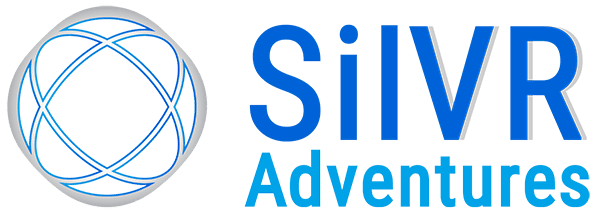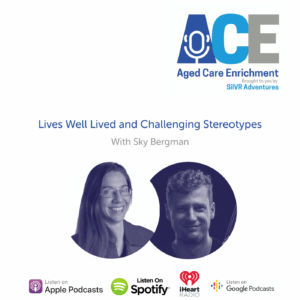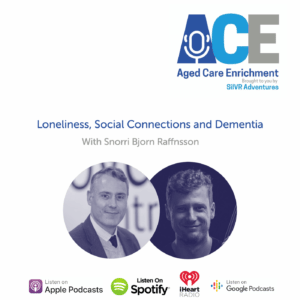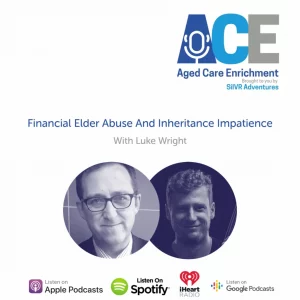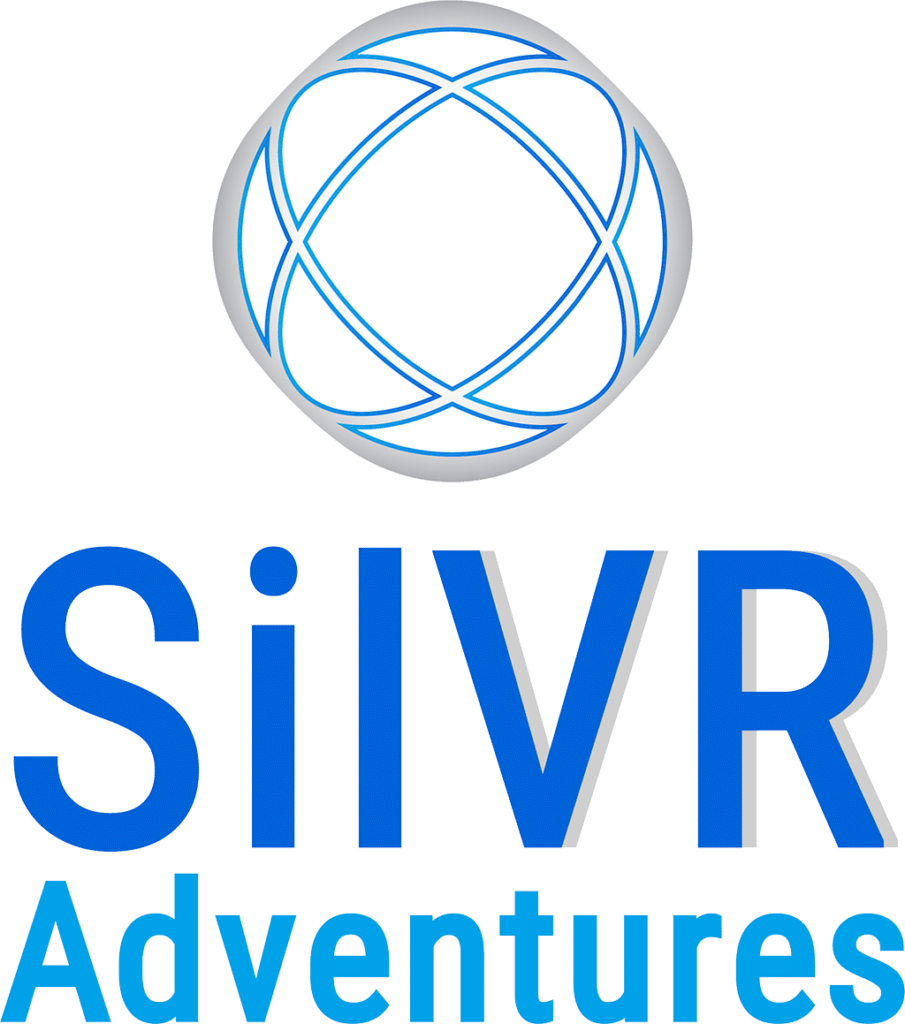Transcript
Ash de Neef: Well, Greg, thanks so much for joining us on the program today. Thanks.
Greg Cronan: Thanks for your time and thanks for your interest.
Ash de Neef: Yeah absolutely. It’s a pleasure. And for those of our listeners who don’t know what you’re doing, could you give us a bit of your background and your work.
Greg Cronan: My background is actually been in the technical design of audiovisual systems. Many aged care organisations and retirement villages would have a, a cinema perhaps, or a meeting with the staff and quite often, there’d be video conferences to involve with that.
So my role was to design the video conference systems, the digital signage, and also when it comes to hospitals, aged care and other places are the medical systems and the security access control. When I was speaking with one aged care organisation, they are interested to have a competitive edge for their new retirement village.
So after doing some research about what’s happening with retirement in the US and parts of Asia and Europe, lifelong learning was a theme. So I came back to the organisation, said, “look, have you considered lifelong learning and using the video conference equipment purchased for staff, and organisational resources for programs that can enable residents and elders retirees to keep on learning.”
Ash de Neef: Fantastic. So when we’re talking about lifelong learning, there is that, what does that look like?
Greg Cronan: Yeah, really good question. So lifelong learning is actually actively participating in a course. So either studying that particular course, it could be university course or a TAFE course. And some universities in the U S actually build facilities or aged care facilities on campus. At the opposite end of the spectrum to tertiary students, are getting elders involved in walking into a classroom, be it preschool or primary school or secondary school, and similarly either actively participate in those lessons or a assist and mentor those students.
Ash de Neef: Fantastic. And I understand that you’ve done some research into those interactions that you mentioned there between students and elders.
What are the benefits of these intergenerational interactions?
Greg Cronan: So for over 40 years, the research shows that co-located intergenerational programs, are programs where the aged care facility that are purpose-built adjacent to an early childhood center or preschool, or even a school. Being co-located that means it’s a one age group can freely visit the other or in a structured way as such. But also the younger students can steer the eldest elder people as they’re walking past, and/or be involved in some sort of structured or unstructured activity. That’s the co-located environment, the visitation model is a second model, which basically means the elders will visit the school and participate in the classroom lesson.
So the area that got me curious was it, um, I was looking at technology and how could technology and visual communications technology play a role in intergenerational programs? And when I did all sorts of research to try and find video conferencing with Skype based or FaceTime and other activities using video conferencing to connect older and younger people. I couldn’t find anything that actually linked up with the school curriculum.
So how can it be personally meaningful for the elders involved in addition to the students involved, but along with curriculum topics. And do it on a weekly basis so that we could get learning outcomes and measure those learning outcomes for both age groups.
Ash de Neef: Lots of different elements to balance there. And I guess hidden in that word, sustainable is the fact that a lot of work needs to happen online now we need to be interacting virtually. And am I correct in that a key feature of your research as well, was connecting people virtually?
Greg Cronan: Correct yes. The idea behind the video conferencing was to compliment the co-located and visitation models, periods of being the same physical space of elders and children is fantastic because there’s a different dynamic involved.
So the question was how well could this work in a virtualized environment using video conferencing? And we were confident that we get some good results, but we were quite amazed that it was as impactful for both age groups as it was. We found that by these weekly interactions, the behaviour of these students was modified enormously.
For example, once students this goes back to 2019, if he wasn’t at the principal’s office every day, he was there multiple times a day, We decided to place this student into the video conference and talk with the elders. And he actually liked talking to one of the elders who is 94 years of age. After that particular video call, we recorded interview with this young student, uh, 11 years of age. And he mentioned how much he loved talking with this older gentlemen Norm. He was quite engaged with normal because the student liked to talk his grandpa in his past, but two years ago his grandfather actually passed away. When he spoke with Norm, he said it was, “I felt like I was talking to my grandpa again.”
I asked the teacher to observe that particular student for Thursday afternoon and Friday, I got a text message back from the teacher saying, “this student’s been awesome. He’s so looking forward to talking to Norm next week”. There are many stories like that. And also the teacher said many, many times that after the video calls of behavior students, it’s just wonderful.
There’s a real calmness, is the theme, that’s come across these students. So in essence, we’ve noticed we can change the life trajectories of these children, but also we have a knowledge resource bank of elders with life experience and learnings that we’re not tapping into. Australia’s got huge resources, but our best natural resources, they’re older people and the research supports this and we’re not tapping into that.
And that is just not doing it justice to the children. But in addition, the older people be residential aged care, or be they living at home alone or retirement living, but its purposeful for elders. They can impact in a positive way, the behaviour, the learnings, masters, these children.
For the teachers too there’s been a great impact on teachers. They see different personalities develop in the students. They see self competence develop, they see the quiet ones wanting to volunteer. And within the age care home context, some comments from the facility have been that the elders involved just after two weeks of video calls, that’s two lots of 45 minutes for the context of this.
Is that these two groups of one group of school students, so year six students, age of 11, and the elders ranging age from 74 to 97 with a range of cognitive decline and cultural backgrounds and language backgrounds. But after two video calls, there were less night time nurse call requests. Which means by deduction residents are sleeping better – the oldest to sleeping better.
Less negativity when it comes to discussions with staff and about meals. One particular gentleman who was 94 years of age, would come down to the facility manager, Karen each day, and want to know who needs to speak to sack her, because, she doesn’t know how to run the place properly, even though it was very well run. And secondly who does need to speak to the sack the chef, cause he can’t even do bangers and mash properly. So while this might sound trivial, it was affecting this gentleman’s health and the health of others because he would not eat his meals. Even though the meals were excellent.
And a meal times, because of his confrontational sort of manner, others would not want to eat, they would not feel in a good mood to eat so they’re losing weight. Since the video call she said that this particular gentleman has not come to our office, he’s actually engaging more in staff is not as confrontational. The residents have something more to talk about rather than just a bingo and the news, that they’re connected to the children. They like to talk about the children or the anecdotes, the jokes, the children talk about or tell.
But because the topics are based on the school curriculum, we’re drawing back and drawing upon the memories and lifestyles and experiences, personally meaningful experiences, of the older people. So memory recall, reminiscing is great for both delaying the onset of dementia and diminishing its severity. So there are a whole range of benefits.
And last but not least the active participants are the students and the elders, but the passive participants are really the teachers and the aged care staff. So, what we found is that teachers are also getting involved. We all have some lineage, grandparents great-grandparents somewhere on the line living or passed away, but it’s a real connection to the teacher.
As well as the effect that has on staff in the aged care home in this context, is that they love hearing the sound of children, they like hearing the laughter. They like seeing the residents happier, there’s happier interactions and that calmness and happiness lingers throughout the day and the following days. It’s also something that the residents look forward to and it’s a reward for them. This is before COVID, but even more relevant during COVID.
So that’s a very, a long snapshot of the program, but look forward to any questions.
Ash de Neef: Yeah, that’s fantastic. Greg I think it’d be really great to hear and I think you’ve brought with you a clip that we could put in now, just to hear a little bit about the program and what it sounds like when it’s going on.
[Excerpt from recording of Intergenerational Learning Australia Programs]
Ash de Neef: Yeah, that’s fantastic. And lots of stuff to dig into there. I want to wind it back to the topic of your research and identifying whether or not conducting these sessions virtually if that had any sort of impact on the quality of them.
I mean, I’ve been wondering that throughout the pandemic, when I’m seeing friends on zoom, does it diminish the sort of interaction that we’re having? How did you measure that it doesn’t impact at all on the quality of the interaction?
Greg Cronan: Very good. A few ways. We do surveys before the start of any video calls throughout the year or for a school term.
And we have a range of questions such as anticipations or expectations of the video call. There’s a range of other questions, such as would these children like to consider working in aged care homes or with older people, a yes no answer and in one sentence explain your reason. We also send surveys out or questionnaires to the parents, we do get parental permission of course. We do record the videos, both for research as well as for reviewing for pleasure.
We also do other engagements as far as surveys on five categories, five lists for the students, beause we’re talking about a learning environment here. How many new words do they hear through each video call? How many new phrases are they hearing? What types of vocalizations do they hear in the video call to get a deeper understanding of communication. So vocalizations, I mean, utterances giggles, laughters et cetera. The use of non verbal cues. So facial expressions, hand gestures, body movements, head nodding. So really deeper dive into the students to be more observant and more attentive what they’re hearing and what this seeing, and also what they’re sensing, three categories that are very important.
And the fifth category is basically learning content. So the course is tied in with the curriculum. It may be what they’re talking about, a history topic or an English topic, or politics, or technology or history, et cetera.
So the way we measure the impact on these students is both the number of words they’re learning each week. In addition to that we do the same survey at the end of the term or end of the year. So questions such as would you like to work with the people as a career. And yes, no answers. There’s an increased to yes. So there’s increased, it was a positive change that they’d like to work with older people.
And the reasons why? They didn’t realize that the other people to speak to “they’re just like us, but just with more wrinkly skin”, verbatim. All these insights because these children, be it primary school or secondary school, in this context of primary school, a lot of them are more exposed to digital devices and TVs and have limited family time together.
But the fact that we are deliberately putting them in front of all the people and the key also to is that when they interact with the older people, it’s not just a laptop sitting in front of a 12-15 older people in a classroom that the size of the face, that this would be the size of a pea, basically as a slight exaggeration, but you don’t get the key facial expressions. We started that way and it does work. So when it comes to technology all you need to kick off with is a laptop and a speakerphone. So at least we can hear each other clearly and see each other clearly.
But we decided that part of the project was to use a motorized camera to zoom in on the face of an older adult and the student. For two reasons, in the classroom, we try to have the face of the older person close enough to full screen. So the students who were four or five metres back could see the twinkle in the eye or the nose twitch, or the cheek muscles grin. And there’s a science behind that to do with the vagus nerve and the polyvagal theory by professor Steve Porges.
So I’m reading those facial cues, but sensing those cues in addition to what we hear and see is very important to our biology, and we’re talking sort of anthropology now. As a mammal, we hear things, we see things, we also sense things. So likewise for the older persons in aged care home, their eyesight is diminishing. So we use at least to 65 or 75 inch TV screen. And we also zoom in on the students’ faces.
Now not all schools can afford a motorized camera like that. So what we do in the classroom is we get two students sitting up close in front of the laptop so there face is nice and close to the camera. But we elevate the laptop so we still see the students in the background.
So technology and the cost of technology should not be a barrier, but the advantage and reasonably do that is to get the students’ faces closer. As of course, older people’s eyesight can start to diminish. So the bigger the image on the screen for the older people, the more immersive the experience. And again, the older people can see the twinkle in the eyes and cheek muscles and all sort of gestures of the child.
So there’s certain ways we measure the outcomes, both in a quantitative way, in terms of writing out responses. And we’ve yet to look at the quality place. So the future area for research in this space is how does this change more practical things such as heart rate? How does it affect the physiology of the person, the calm is how do we measure that we can measure?
So nurse call requests that night they can be measure. We haven’t done that as such yet, but anecdotally constant staff have told us that. But other the areas to the interest aged care organisations are pain management. So with the feel good endorphins, serotonin that can really improve the mood. Is there a correlation between reducing pain medication?.
So yes there are ways to measure improvements both to the elders, similar surveys for the elders as for the students.
Ash de Neef: Yeah. Fantastic. Sounds like there’s lots of different types of data to look at there. I’m wondering when you’re talking about this range of benefits. It, it sounds like the curriculum is framing the conversations with relation to, the school curriculum is a structure, but it’s not necessarily the focus of the interactions.
It sounds like the, the social benefits, the emotional benefits almost outweigh the sort of the knowledge benefits they get out of it.
Greg Cronan: That’s a really good point. It is about social interactions and about building relationships. The curriculum is the framework. And on that point too, it’s a reciprocal learning process, so it needs to be mutually engaging and personally meaningful for as many of the participants as possible.
So while we do have the school curriculum topics each week amongst the whole range of subjects, you expecte in school, it’s also interesting to ask the elders what topics interest them. So their sports, their careers, where they’ve traveled and it’s a quite way for students to also learn about the experiences of people. Implicit to that too, is in the English curriculum in year six at least, the students need to write a biography.
So rather than writing a biography about a famous person or going to Google or searching. They get together in groups and they’ll interview each of the residents, so it’s a practical application. So it must be a reciprocal bi-directional learning interaction. It’s mutually enjoyable. And that’s the bottom line. It is an enjoyable experience for the students and the elders.
Ash de Neef: I’m wondering here because, if you’re pairing 11 year olds or, or sixth grade with people who are in a residential care home, this could kind of work with people in all sorts of different settings. Is the choice to use residents of a care home. Is it a practical one or is there something specifically you’re trying to address with people who are living in care ?
Greg Cronan: On the research side of things, it’s a convenient sample. So the school is only a few kilometers away as is the aged care home. So technically to be able to get to both locations, and having a knowledge about the school and the aged care home made it easier to introduce the program. But the design and strategy of this program is to use it for elder persons in whatever environment they might be.
So we have three environments, we have residential aged care homes or facilities, we have retirement living facilities or independent living units and we also have had the community care elders living at home alone. And that’s the other reason why we chose video conferencing. And recently we’ve been invited persons from home to join us with our people from the Sydney area, Randwick, which is near the Bondi Sydney’s Eastern suburbs, Wollongong, which is an hour and a half south of Sydney and Greystains in Western Sydney.
So the age group for Diana is in her late seventies, the lady from Wollongong, Val she’s 92 and mid-way through her degree in dementia care, brilliant lady. And Frank is was a war veteran. So, um, certainly we want to trial it in aged care, home, as it’s a more controlled environment, and it’s a group setting. So it was interesting to see how that works and then how the dynamics work, and now we’re going out to getting elders involved within their own home.
Several reasons for that, iss that we know the age group over 65 is going to double next 15 to 20 years and the age of 85 and above will quadruple in the same time period. We also know the aged care industry has gone through a lot of change due to the aged care royal commission and others sort of media and so on, and that the government pushes to have people age at home. So we’re going to be living longer and living at home longer.
Part of the problem with that is it’s a lot of people who have good health will be living at home a lot longer, but perhaps without that social support next to them. So at least by video conferencing in a meaningful way, that’s one way to engage them and keep the mental academic stimulation going and to engage and meet other people and meet new friends, especially meeting the school students.
Ash de Neef: Yeah. Well, you can see a situation where it becomes sort of a social club for older adults if they’re living at home. That, you know, Tuesday mornings at 10, I check in and have some fun with the kids and it’s a conversation and I’m always there for that conversation.
And that could be something to look forward to throughout the week.
Greg Cronan: And it’s also both age groups have used the term it’s a responsibility they’ve got. The school students said we were looking forward to meeting next week because we’re going to follow up on what Rex, or what Norm, or what Margaret have got to say. Or I’ve got something to show them next week.
And likewise, the comments from the elders is that we’re connected to these students now, that we want to know how that goes through school. You know, we have a responsibility to be here apart from the reward. So the reward factor is also very big. They look forward to it. It’s something novel, not because it’s something fun to do, which it is, but it’s novel because it’s got purpose and meaning behind it, but for all participants.
Ash de Neef: Is there something about 11 year olds as well, or that age group that responds better to these sorts of interactions? Have you tried with older students or younger students?
Greg Cronan: Yeah. Another really good question. We’ve tried it with different age groups, both in high schools and primary schools.
So with year four students, and year one students. The year four students engaged very well in conversation. But with the year one students there’s less conversation, we had it for only a 15 to 20 minute period of time. But the best way to describe the visual impact of the one students, 30 of these six year old, seven year olds wriggled and could not sit still, it was like watching a can of worms. Which was just so appealing and the elders just loved that visual image, and they just smiled.
And they enjoyed what the children had to ask about such as what school they went to, how they were in year five or year six or year one, and a range of other very simple questions as such. So again, it’s the experience, it’s a very positive experience. The conversation’s great but it’s just the being together that’s critical.
Ash de Neef: Yeah I can see that. And I know that around Australia, I’ve heard about a place in Perth that’s doing this and in, in Queensland as well, aged cares that are building childcare centers attached to the residential complex. Maybe there’s a chance here. I dunno if you’ve looked at this combination but it could be sort of a less structured approach as well. If, if the kids are just coming in and actually being with the older adults.
Greg Cronan: Very good. To your point about intergenerational communities, the New South Wales government has certainly been reviewing this area and there’s the office of New South Wales crown land and the office of the commissioner of New South Wales crown land who are talking and looking to partner with a range of organisations. Be it property developers, education organisations, schools, aged care organisations, charter organisations, uh, affordable living, housing organisations to look at partnering and developing intergenerational communities.
Because we know the benefits of getting these two age groups to, to link together, to be more active together. So certainly the New South Wales, government’s got a big push in that space to foster intergenerational communities. And that does commence by looking at developing an aged care home on site with an early childhood center.
There’s also another excellent example of Wellington New South Wales. They’ve recently just built a preschool as part of an aged care facility.
And that’s one of Australia’s first purpose built inter-generational communities backed by research from Griffith university and professor Fitzgerald. So. intergenerational programs don’t necessarily always need to involve really, really old people, with really really young people, parents and children, that’s intergenerational, grandparents and children is intergenerational.
But the context in particular I’m talking here is engaging really old people who have a lot of resource, wisdom, and knowledge to share with us, and perhaps are living quite and very lonely and isolated and trying to get them engaged back in the community and with the school students for the mutual benefit.
Ash de Neef: Now, what does this program look like, or what does this type of program look like Say 15 years in the future? Where do you imagine it going?
Greg Cronan: As I mentioned before, 15 to 20 years time, the group over 65 is going to double and the aged group over 85 is going to quadruple. So we have certainly within the Sydney area, several hundred thousand students and many thousands of teachers. We know that the reciprocal learning benefits, health and behaviour benefit of this program. So the scale this and implement this into the curriculum is the goal. There’s so many benefits to both age groups, but also at a societal level, it’s a regrettable comments, but we’re still warehousing older people to the side and not seeing the value in them. Much to the detriment of our society.
So the goal is to expand this nationally. I’ve already gotten interested in New Zealand, so there’s international interest as well, uh, because it’s a common theme in most westernised societies, or any societies that are being influenced by Western culture more to the point. So yes certainly to scale it.
So we talked with government agencies, we talked with various ministers, both federal and state, and a range of educational organisations and aged care organisations nationally. So when you and I chat in the next six to 12 months, I’m going to come back to you and say it’s happening in each state and we’re scaling it.
That’s the other key to this as well. For any research to be worthwhile, it needs to be robust, and it needs to be sustainable. So we designed this program to have minimal impact on staff workflow in the aged care home, and also the school, and to be easy to implement, and minimise technology. So that you increase user adoption.
The other reason programs fail is a lack of ongoing support. So we designed into this program ongoing support because you get champions that come to an organisation or school then they go, then typically the program falls over. So it’s been designed to be sustainable. So love to talk to policy makers, both federal and state in education, aged care, and also social welfare about the benefits of this.
Ash de Neef: Yeah that’d be amazing to have every kid go through school with this sort of experience and an extra resources and people to bounce off all the way through me. Very exciting. Greg I couldn’t let you go without mentioning that you’ve just joined the SilVR Adventures board of advisors, and I think there’s probably a lot of crossovers between your work with intergenerational learning and SilVR Adventures’ work in VR.
Greg Cronan: Yeah I really look forward to being on the board of advisors. I’ve been looking at what SilVR Adventures has been doing that the last two years, and it’s really intrigued me the area of virtual reality. The effect that it can have on a whole range of older persons especially one where a lady with dementia was quite distressed. But when the virtual reality headset was placed upon her looking at some nice scenes of underwater worlds or barrier reefs and so on, it had an immediate calming effect on this lady.
But where I’m interested to explore this further as you get the students and the elders to be looking at the same type of virtual reality video. For example it could be environmental videos as such. It could be a space exploration. These are typical topics the students discuss in primary and high schools. But in order to get a deeper level of learning, it would be certainly interesting to get both age groups to view the same VR video as such and use that as a point of discussion when they meet in the video calls, as a point of reference. From that we could then expand into conversations about what does Rex Norman Audrey and Margaret think about the environment? How has it changed? And likewise get perspective from the students.
Ash de Neef: Yeah well we’re really excited to have you on board. And as you said, the interaction afterwards is going to be really amazing to have that as a launching point for further discussions. What can people find out more before we leave it there for today?
Greg Cronan: So the website is the first place to go to that’s www.intergenerational-learning.com.au. There’s an email address on there you can just click on that.
Ash de Neef: Well Greg, thank you so much for your time today.
Greg Cronan: Thank you very much. Appreciate your time Ash. Have a good day.
